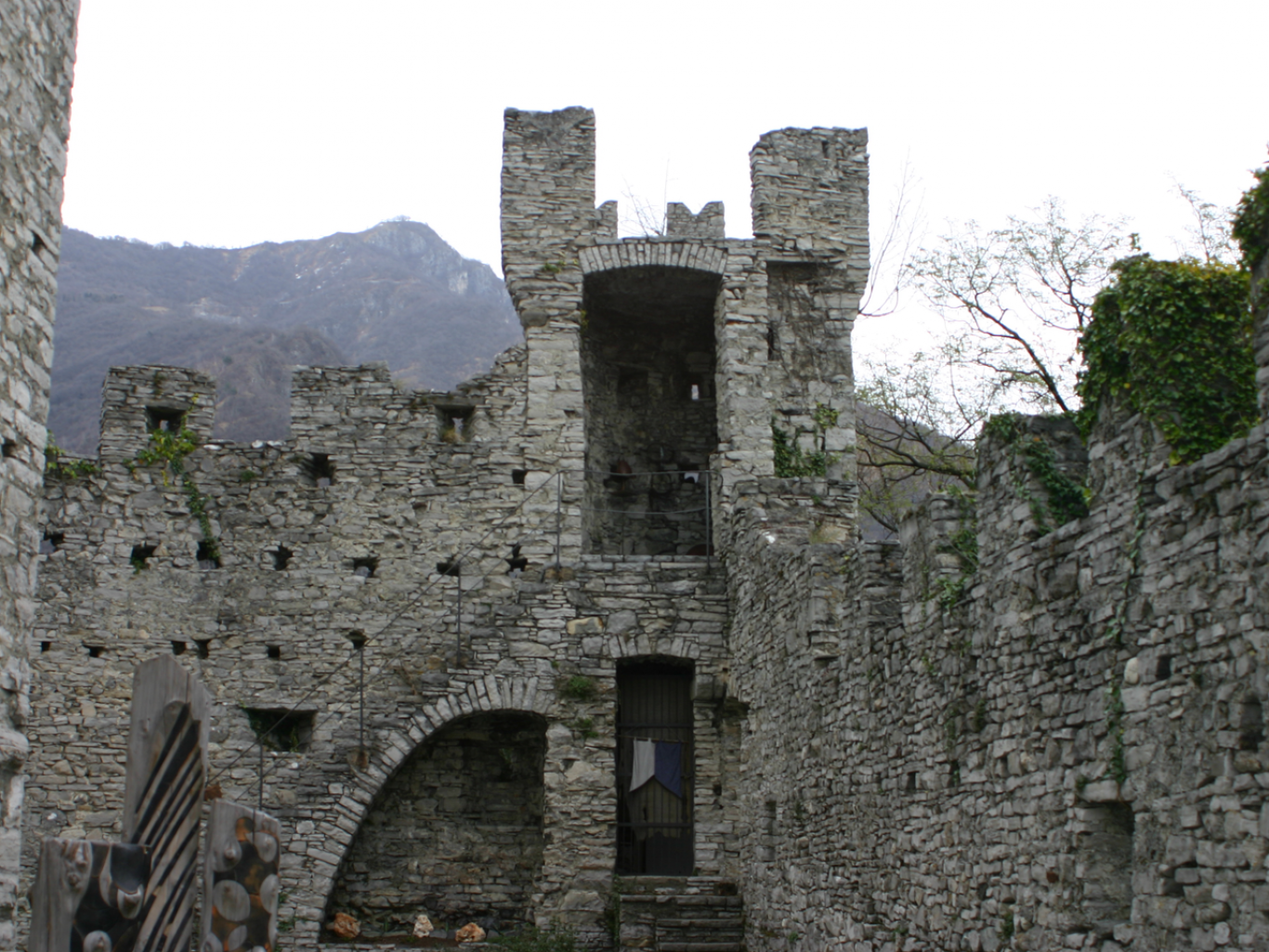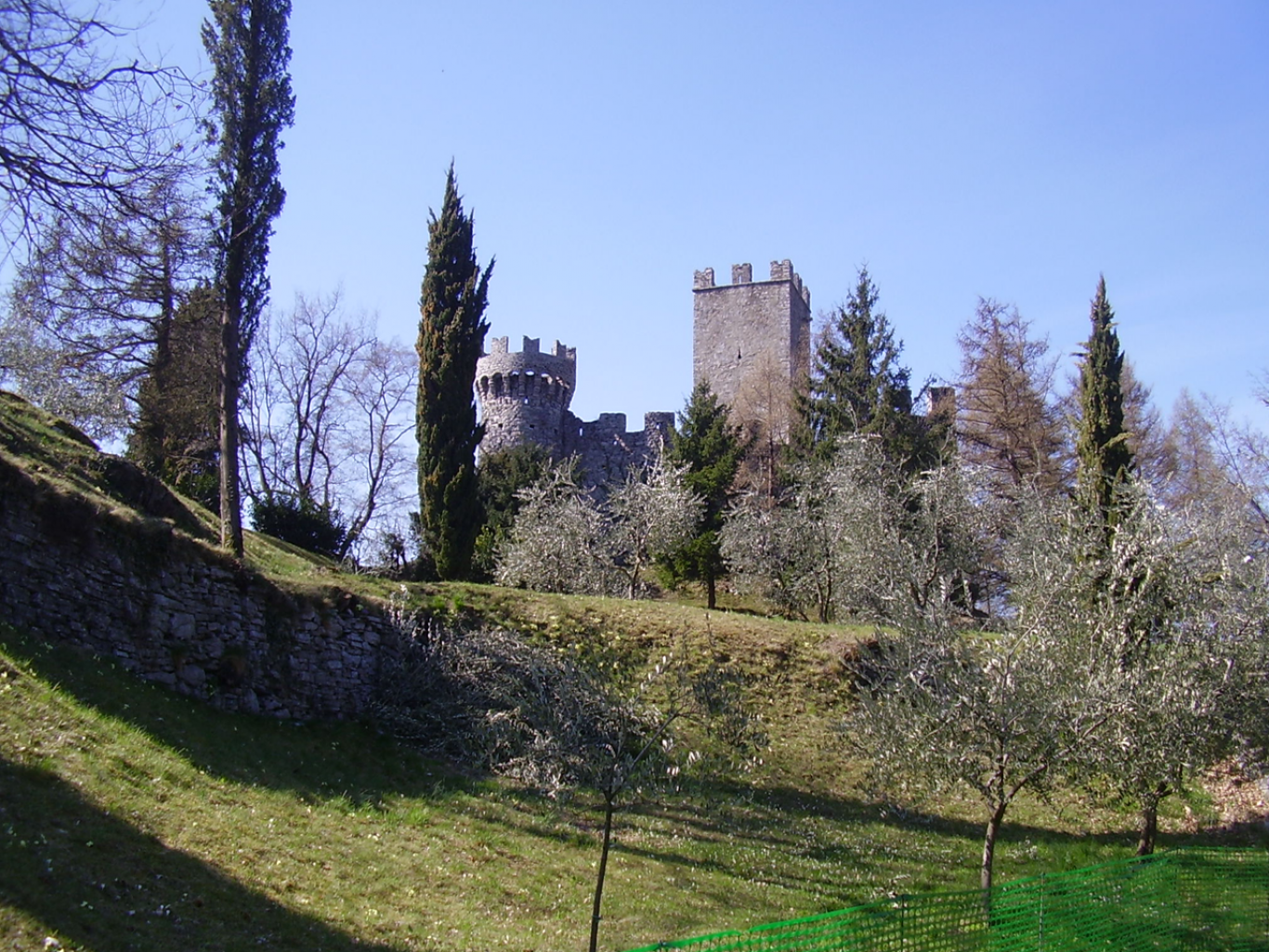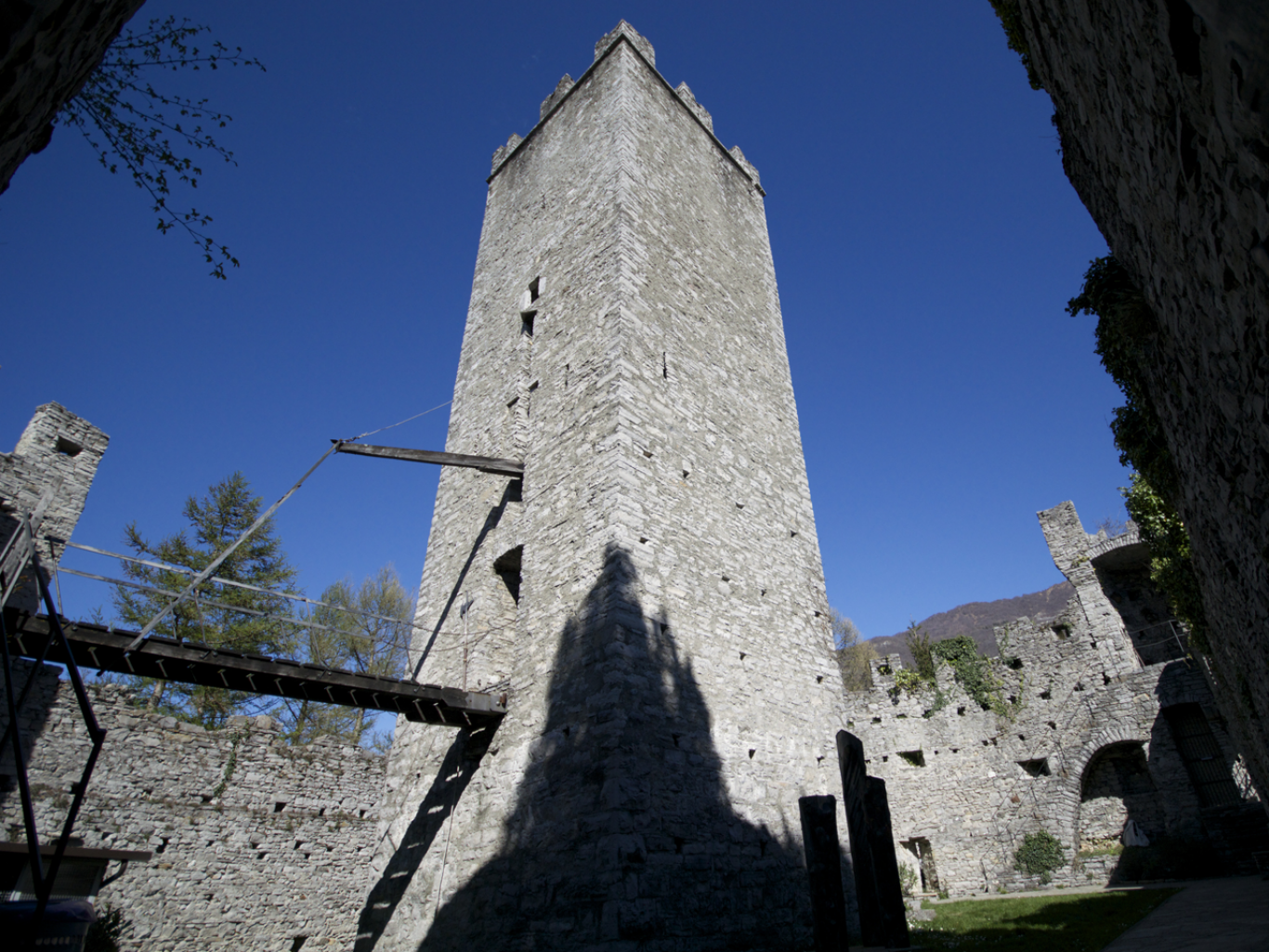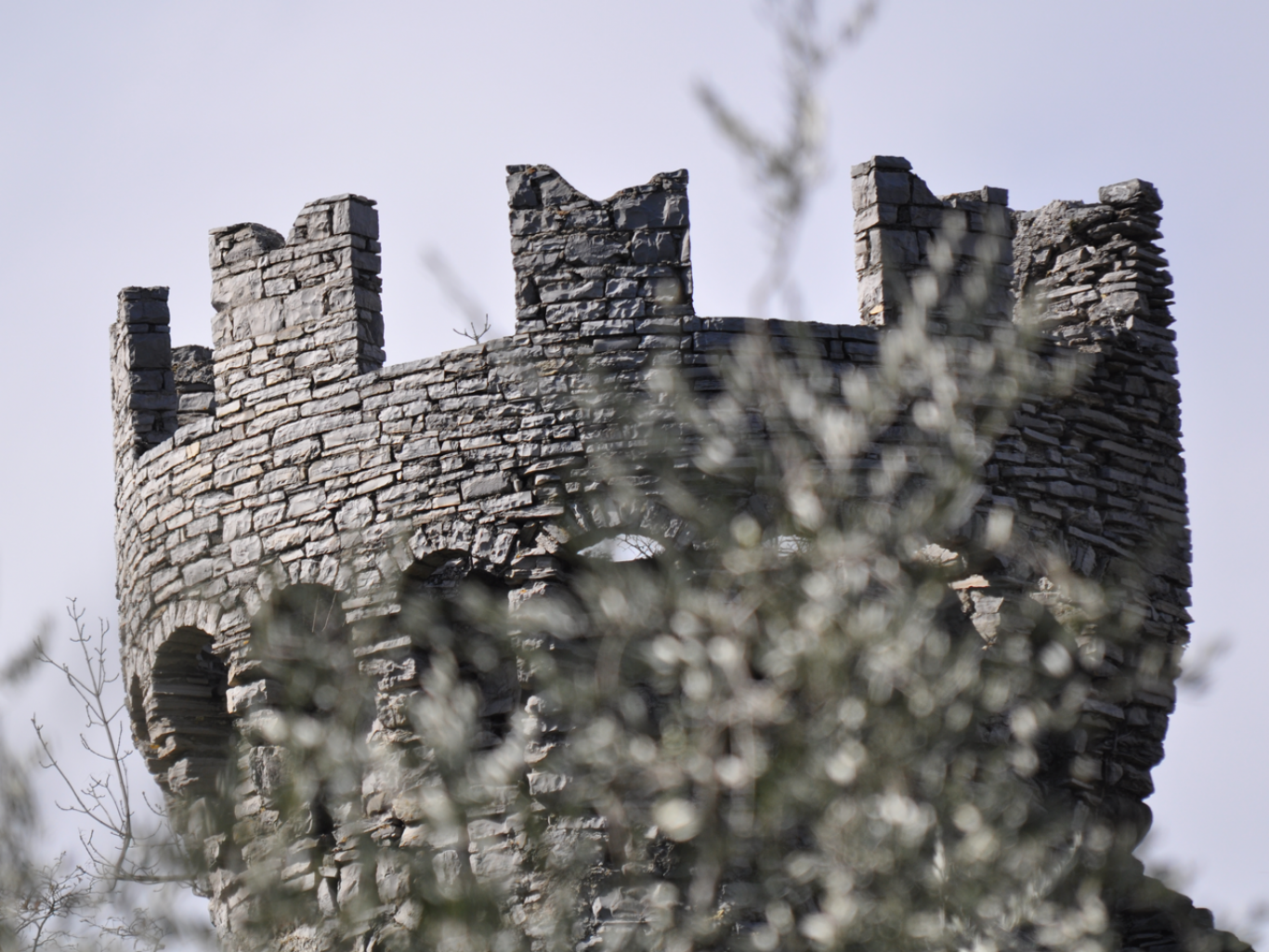VISITING THE CASTLE
Welcome to the Vezio Castle
Vezio Castle, a private property, is open to the public for most of the year, usually every day from March to the beginning of November and on weekends when the weather is nice during the winter. Since 1998, the Castle’s management has been responsible for ensuring that it is open to the public, as well as maintaining, improving and restoring it, and promoting cultural, historical and artistic exhibitions and events within it. Your entrance fee is used to rent the property, maintain the structure and to finance a comprehensive restoration project, part of which has already been carried out and part of which will be carried out over the next few years.Our mission is focused on promoting the area and its historical, natural, microclimatic and botanical characteristics and their dissemination through numerous informative and descriptive panels, botanical identification plaques and in-depth information of various kinds in order to make it all accessible to a diverse public in terms of age, culture and geographical origin, and with some playful licence especially for the youngest.
Visiting the Castle
Once you have purchased your entrance ticket at the snack bar/ticket office, you will find yourself at the entrance to a gravel driveway: to your left, a slope leads up to the picnic and recreation area for the little ones. To go the entrance to the castle, headstraight and along the north side of the castle, you can admire our “Hydrangea Fantasy”, a collection of hydrangeas and ground cover plants in the shade of chestnut trees and centuries-old larches.A little further on you will reach the panoramic terrace, where such a panorama will open up before your eyes that you cannot fail to be amazed by its beauty and majesty. As you approach the balustrade you will realise that you are overlooking Varenna and you will see Lake Como in front of you in all its splendour. The lake is split into two branches by the Bellagio peninsula: the Lecco branch to the left and the Como branch straight ahead. The peninsula you see in the distance is not the Comacina Island but the Ossuccio peninsula with the Balbianello cape at the end; just before it on the right is Villa Carlotta and going up the coast you will find Cadenabbia and Menaggio.Temporary exhibitions of works of art are often held in Vezio Castle: you will come across some hand-carved wooden statues by a local artist, Luigi Gambato, as well as the “Ghosts of Vezio”, white sculptures made every year in the summer by tourists who volunteer by posing after being covered with gauze and plaster and remaining motionless for about an hour, after which time the ghostly sculpture is removed and remains in the castle until the winter snow destroys it.To your left, an upward flight of steps flanked by beds of aromatic plants (“The Simple Garden”, a small homage to the medicinal and officinal plant gardens common in the monasteries and convents of medieval Italy) and to your right by our “Dry Lawn”, an experimental lawn of ground cover plants with very little need forwater and maintenance, an ecological alternative to the classic English lawn, will take you to the “Olive Garden”.Through a wooden doorway, you enter the walls surrounding the tower. Inside the walls, we have attempted to chronologically retrace the history of the area, from prehistoric times to the Middle Ages, including a permanent exhibition on the Lariosaurus (a medium-sized reptile, up to about 1 metre in length, belonging to the aquatic Notosaurus, an extinct group of aquatic reptiles that lived in brackish lagoon or coastal marine environments) including casts of the various specimens found around Perledo, Varese and the rest of the world. The stone staircase on your left will take you to the top of the tower via a drawbridge. From here the 360-degreeview of Lake Como is unparalleled. There is an exhibition of weapons, clothing and armour inside the tower where we have tried to give an insight into the early medieval period and itsvicissitudes. Back in the courtyard, we invite you to go and admire Arthur, our eagle owl, an unlucky but beautiful animal that we rescued years ago from a bad situation and who was entrusted to us since, unfortunately, he could neither be released into the wild (he would die of hunger and hardship) nor be trained (he has developed too much fear of humans to trust). We take care of him daily and try to ensure that he has the most dignified life he can live. Do not disturb him and do not go near him with dogs. Finish your tour around the walls bordered with typical Mediterranean plants and flowers to a side turret on which you can find some remnants and parts of replicas of armour and weapons.Back in the olive grove, on your left you will find a downhill path that will take you to the southern part of the castle. After passing a few suggestive panoramas, continue along the path and climb up until you reach the entrance to the underground tunnels, an outpost of the Cadorna defence line (1915-1918), which was supposed to counter any German invasion attempt from the Menaggio basin. Be careful, the steps are worn away by time and weather, but above all be careful what you find there. Forgive us for a few playful and humorous liberties we’ve taken in the layout, but as you know, every castle, no matter how small, has its legends and its secrets...As you ascend from the underground tunnels, take the steps that go up and you will be back on the viewing terrace and then on the gravel walkway leading to the exit. Thank you for your visit.One last tip: if you want to refresh yourself, an excellent snack bar awaits you at the entrance to the Castle. Upon booking, you can also enjoy sundowners on the Castle’s splendid panoramic terrace, giving you the chance to taste local products and admire the sunset over the lake. For information and reservations: +39 3334485975
The Castle Garden
If you look around, you will realise that you are in a climatically peculiar place. The continental and alpine vegetation on the north side of the Castle, characterised by chestnut, hazelnut, fir and larch trees, leaves room in the area facing the lake for Mediterranean flora characteristic of more temperate and mild climates: olive trees, agaves, rosemary, palms, and succulent plants. This peculiarity is due to the mitigating action of the lake on the Larian climate, which allows the growth of plant species characteristic of lower latitudes. In fact, you are in the midst of an olive grove, probably the most northerly productive olive grove in the world, where a superior category of extra virgin olive oil is produced that is among the most renowned and valuable. Recently awarded the protected designation of origin, PDO, “Laghi Lombardi Lario”, and having won numerous competitions, it is characterised by a very low acidity and traditional harvesting and pressing that enhance its flavour, and which, if interested, you can find for sale at the snack bar-ticket office. Over the past few years, we have started a project to upgrade the Castle Garden by enhancing the native botanical heritage, creating a small Mediterranean botanical garden, flowering and experimental meadows, and mixing aromatic and ornamental plants. In our project, respect for the environment plays a central role: we have chosen a rational criterion for the use of irrigation water, the choice of species has been made taking into account the climate changes taking place and, above all, we have completely abolished the use of poisons and pesticides. On the contrary, we are trying to attract and safeguard pollinating insects with bugs hotels and the choice of numerous melliferous plants, aiming to achieve the greatest possible biodiversity: some botanical rarities, tillandsias, cacti and succulents, aquatic plants and water lilies, carnivorous plants and more.
The History of the Castle
The origin of the fortification is unclear. The toponym Vezio is probably of Roman origin, as suggested by the Roman families, also present in the Como area, who bore this name. The general topographical picture of the castle and the village of Vezio shows similarities with well-documented serf settlements that arose near the castle on which they depended. Various authors, including Pensa, attribute to the castle an early phase in Late Antiquity, attributable to its function as a strategic late Roman military centre guarding the road from Bellano to Esino Lario, and as a sighting and signalling post dominating the entire lake. Of the subsequent Byzantine and Longobard phases, little can be said, except to recall the legend about Queen Theodelinda: it is said that the famous Theodelinda, Queen of the Longobards, spent her last years in Perledo, and had the church of San Martino built, with its ancient belfry in the form of a tower, and the castle of Vezio together with the oratory of Sant’Antonio to leave a visible trace of her Christianfaith. There are many places in Lombardy that claim such a tradition, however, it must be taken into account that the Lombardshad to equip themselves with the best military defences; in the case of Vezio, the importance of reconstructing the castle that was destroyed following unspecified conflicts, and the strategic nature of the position is evident. An early, certain attribution of the castle is linked to the coming of the Comacini exiles, following the war with Como in 1169 AD. Paolo Giovio, writing in 1559, tells us, “The islanders built two castles in the new habitat, one on the right side of the Lario, the other in the elevated fortress and ridge of the mountain above it with the buildings and a view of the whole lake”.The hypothesis that the islanders were the first builders of the castle of Vezio is today discarded by most authors. It is more likely that it was a massive building effort, which in addition to the castle,was linked to the village of Varenna. What is certain is that the castle was of primary interest to the Comacini who came to Varenna: the fortified system of the village is, in fact, now central to Vezio, which is connected by walls to the village below, some of which can still be seen and are known from various documents. It also served as a refuge for the population of Varenna during the continuous Comacini assaults that characterised the entire late-medieval history of our town.In addition to the monumental tower of Vezio, other evidence of military structures can be found along the initial stretch of the path that connects Vezio to Ortanella and the road that connects Vezio to Fiumelatte: remains of a wall, ruins of buildings, a farmstead that shows evidence of a watchtower, and the ruins of a farmhouse showing openings of a defensive type. According to Pensa, these works can be attributed to the war between the Duchy of Milan and Venice.One of the first documents that tells us about Vezio is from the year 1368. The document relates to a donation of land benefiting the church of Sant’Antonio di Vezio. In the 17th century, the tower was in the ownership of the parish of San Giorgio di Varenna. In 1600, a dispute arose between the parish priest of Varenna and the Duke of Monte Marcino over the latter’s occupation of the tower of Vezio despite the rights claimed by the parish of Varenna. The lawsuit for possession of the castle was won by the Count of the Riviera, who leased his possessions in Vezio, in 1619 to GiovanniAntonio Forno in 1631 to Giovanni Antonio de Tarelli and in 1656 to Antonio Tarelli. According to two inscriptions by Parlaschino, the tower of Vezio was rebuilt in 1635. The castle remained with the Sfrondati (Counts of the Riviera), and after their dynasty died out, with the Serbelloni heirs. In 1647, the lands of Perledo and Varenna were transferred to the Valtellina fiefdom of Count Giulio Monti. In 1778, the fiefdom of Varenna passed to the Serbelloni family, whose relative, Crivelli Serbelloni, retained possession of the tower of Vezio until the 19th century. The property then passed to the Greppi family and the Counts Nicolis di Robilant, who still retain possession today. In 1998, following extensive renovation and repairs, the castle was finally opened to the public.
Getting back to Varenna
Coming down from the Castle’s path, when you reach the gate near the small cemetery of Vezio, keep to the left to reach Varenna near the station and the boat dock, or keep to the right and after a few metres take the path on the right (Scabium) to reach Varenna near Villa Monastero and the centre. To reach the nearest car park, turn left and go past the ceramics shop and turn right at the small square with the two benches, go past the restaurant Il Portichetto, a few minutes uphill and you have arrived.
We thank you for your visit. For any information, please check our website www.castellodivezio.it or write to info@castellodivezio.it. We would appreciate any suggestions, reviews or constructive criticism you would like to give us.






